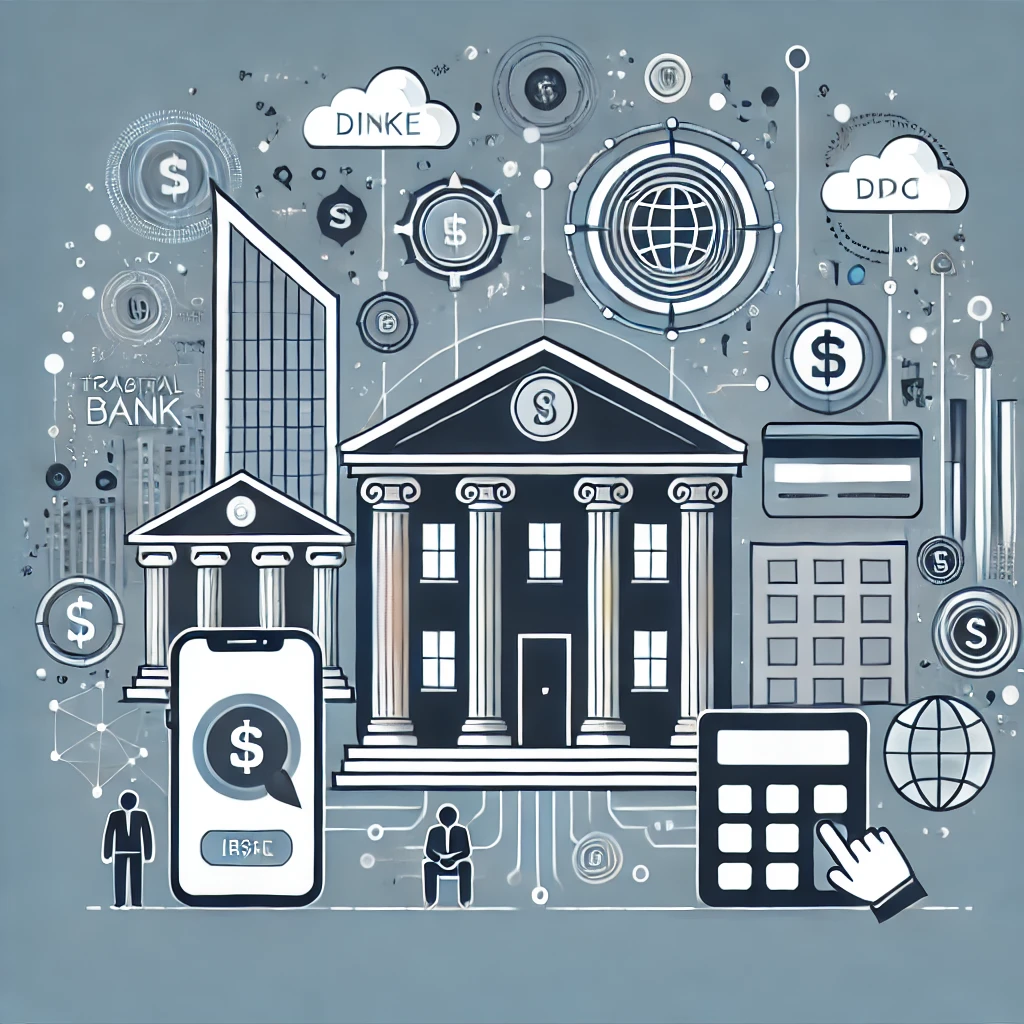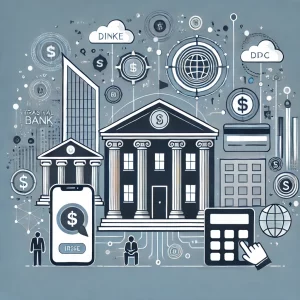The Impact of Technology on Traditional Banking

The financial sector has undergone a profound transformation over the past few decades, primarily driven by the rapid development of technology. Traditional banking, which has long relied on physical branches, human intermediaries, and paper-based systems, is increasingly being challenged and reshaped by digital innovations. From online banking to the rise of fintech, blockchain, and artificial intelligence (AI), technology is fundamentally altering how banking services are delivered, accessed, and managed.
In this article, we will explore the ways in which technology is impacting traditional banking, focusing on the benefits, challenges, and the future of the banking industry.
1. The Advent of Online Banking
One of the most significant technological developments in banking is the advent of online banking. The ability to perform banking activities through a computer or mobile device has drastically changed the way customers interact with their banks. Online banking offers convenience and accessibility, allowing customers to perform tasks such as checking account balances, transferring funds, paying bills, and applying for loans from anywhere in the world. This shift has made it easier for customers to manage their finances, reducing the need for physical visits to a bank branch.
Online banking also offers 24/7 availability, ensuring that customers can access banking services at any time. This has led to a decrease in foot traffic to traditional branches and a reduction in the operational costs associated with maintaining these branches. Banks can now reach a global customer base and serve clients in remote areas, making banking services more inclusive.
2. Mobile Banking and Digital Wallets
Building on the success of online banking, mobile banking and digital wallets have taken customer convenience to a new level. With mobile banking apps, users can access their bank accounts from their smartphones, enabling them to check balances, send money, and pay for goods and services on the go. This convenience has made mobile banking particularly popular among younger generations, who are more tech-savvy and prefer digital channels over traditional ones.
Digital wallets, such as Apple Pay, Google Wallet, and Samsung Pay, have further transformed payment systems by allowing users to store their payment card information on their smartphones and make contactless payments. These innovations have not only improved the customer experience but have also prompted traditional banks to reconsider their approach to payments and transactions.
As a result, banks are investing heavily in developing mobile apps and digital payment systems to remain competitive. Some banks have even launched their own digital wallets, aiming to capture the growing market for mobile payments. This shift has been particularly evident in the rise of neobanks—entirely digital banking institutions that operate without physical branches and focus on offering easy-to-use, app-based banking services.
3. Automation and Artificial Intelligence
The implementation of automation and artificial intelligence (AI) is another area where technology is making a significant impact on traditional banking. Banks are increasingly using AI-powered chatbots and virtual assistants to handle customer inquiries, process transactions, and provide personalized financial advice. AI algorithms can analyze customer data to offer targeted product recommendations, such as credit cards, loans, or investment opportunities, based on a customer’s spending habits and financial goals.
AI and machine learning are also being used in fraud detection and risk management. By analyzing large volumes of data, AI can identify suspicious patterns or activities, allowing banks to quickly detect and prevent fraudulent transactions. This not only enhances security but also reduces the cost of manual oversight and investigation. AI can also help banks make better decisions when it comes to lending by assessing creditworthiness more accurately and efficiently.
Furthermore, banks are adopting robotic process automation (RPA) to streamline repetitive tasks such as data entry, document verification, and account reconciliation. RPA allows banks to improve efficiency, reduce human error, and lower operational costs. These advancements are changing the role of bank employees, as many manual processes are automated, enabling staff to focus on more complex and customer-facing tasks.
4. Blockchain and Cryptocurrency
Blockchain technology and cryptocurrencies have the potential to revolutionize the financial industry, and traditional banks are taking notice. Blockchain’s decentralized and immutable ledger system offers a more secure, transparent, and efficient way to manage transactions. Banks are exploring the use of blockchain for cross-border payments, allowing for faster and cheaper transactions compared to traditional methods.
Cryptocurrencies like Bitcoin and Ethereum have also gained significant attention as alternatives to traditional banking. While some banks are cautious about embracing cryptocurrencies, others are exploring how to integrate blockchain technology into their operations. Some banks have already launched blockchain-based solutions for settling payments, issuing bonds, and facilitating trade.
In addition, blockchain can simplify the verification of identities and reduce fraud in areas like Know Your Customer (KYC) and Anti-Money Laundering (AML) compliance. By providing a transparent and immutable record of transactions, blockchain can help banks streamline compliance processes and improve security.
However, the integration of blockchain and cryptocurrencies into traditional banking is still in its early stages, and regulatory challenges remain a significant hurdle. The volatility of cryptocurrencies and the uncertainty around their legal status in various countries are also concerns for banks.
5. Open Banking and APIs
Open banking is another technological advancement that is reshaping the banking sector. Open banking allows third-party developers to build applications and services around a bank’s data, using application programming interfaces (APIs). This has led to the rise of fintech companies, which provide innovative financial products and services, such as personal finance management, peer-to-peer lending, and alternative lending platforms.
By opening up their systems to external developers, banks can offer more personalized and customer-centric services. Open banking allows consumers to seamlessly integrate their banking data with other financial services, giving them a more comprehensive view of their financial health. It also promotes competition, as smaller fintech companies can innovate and offer solutions that challenge traditional banking models.
For example, open banking allows customers to connect their bank accounts with budgeting apps that provide insights into spending patterns, savings goals, and investments. It also enables smoother integration with payment platforms, lending institutions, and insurance providers. Banks that embrace open banking are able to provide more value to their customers while maintaining control over their core banking systems.
6. The Challenges and Risks of Technology in Traditional Banking
While technology offers numerous benefits, it also presents challenges and risks for traditional banks. One of the main concerns is cybersecurity. As banking services become more digitized, the risk of cyberattacks, data breaches, and fraud increases. Banks must invest heavily in cybersecurity measures to protect customer data and ensure the integrity of their systems.
Another challenge is regulatory compliance. The rapid pace of technological change in banking has created a complex regulatory environment. Governments and regulatory bodies are working to establish new rules and guidelines for digital banking, cryptocurrency, and fintech. Banks must ensure they comply with these regulations to avoid legal and financial penalties.
Finally, the shift to digital banking means that traditional banks must adapt to changing consumer expectations. Many customers now expect fast, convenient, and personalized services. Banks that fail to embrace technology risk losing customers to more agile fintech startups or digital-only banks.
7. The Future of Traditional Banking
The future of traditional banking will likely be shaped by continued advancements in technology. Banks will increasingly rely on AI, blockchain, cloud computing, and open banking to provide faster, more secure, and more convenient services to customers. At the same time, traditional banks will need to balance technological innovation with regulatory compliance and cybersecurity.
In addition, the role of physical bank branches will continue to evolve. While branches will remain essential for certain services, such as high-value transactions, customer relationship management, and financial advising, many routine banking tasks will increasingly be handled through digital channels. As a result, banks will need to invest in both digital and physical infrastructure to meet the needs of a diverse customer base.
In conclusion, technology has already had a significant impact on traditional banking, and its influence will only continue to grow. Banks that embrace innovation and adapt to the changing landscape will thrive, while those that resist change may find themselves left behind in an increasingly digital world. The future of banking is undoubtedly digital, and technology will continue to shape the way we manage, invest, and access financial services.





